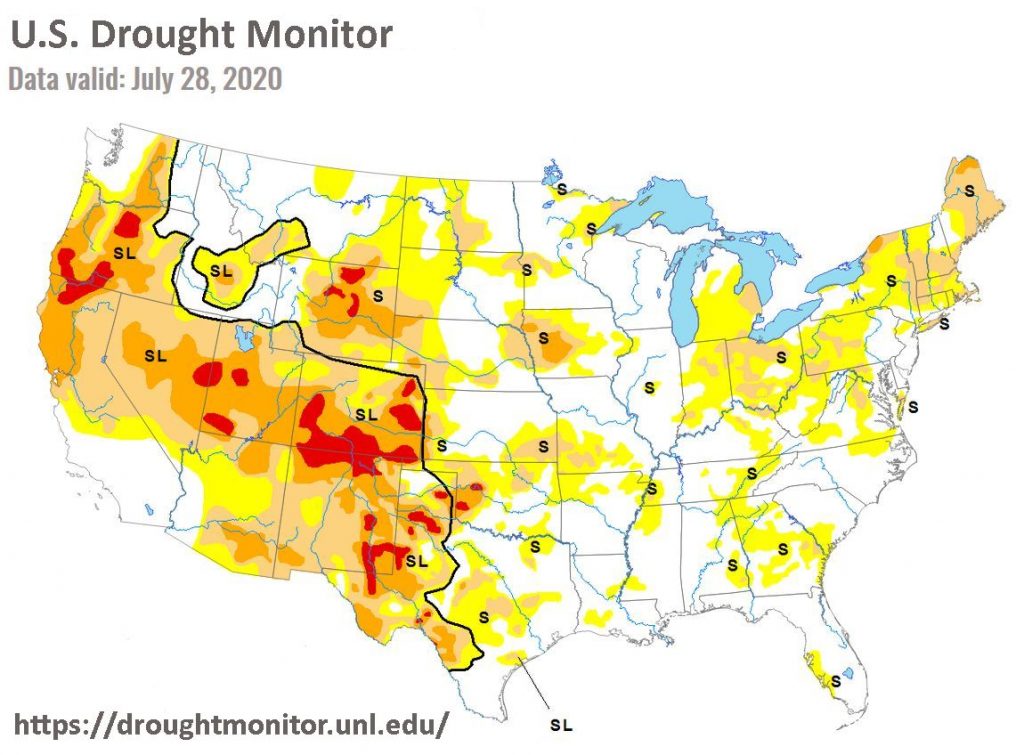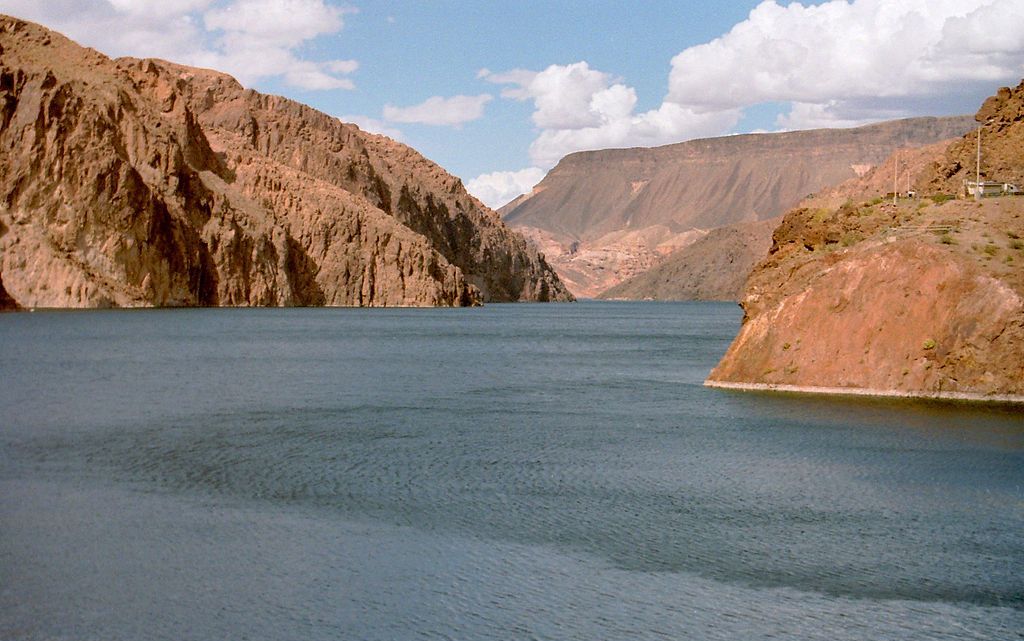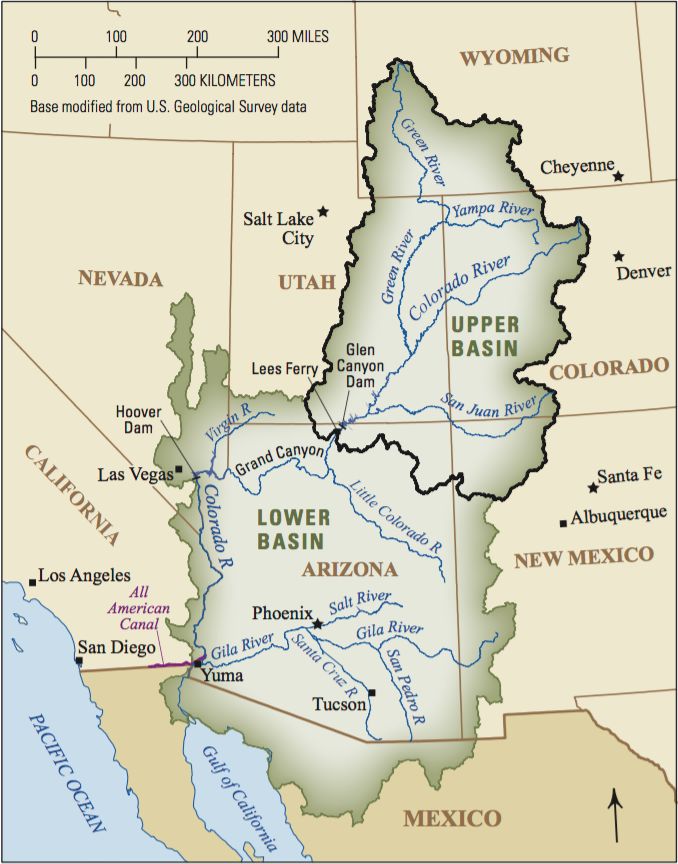It’s hard to remember what we worried about before the coronavirus, but long term water crises provoked by climate change are still chugging along in the U.S. West. The most troubling of these is looming at the Colorado River, the water source for over 40 million people.
Many of the seven western states in the Colorado River watershed are suffering under severe to extreme drought. Of course it affects the river.

But drought is not the only factor. A study published last February found that 20% of the river flow has been lost to the albedo effect in a period of 20 years.
Albedo is a reflectivity measure of various surfaces as they reflect sunlight back into space. Snow and ice have high albedo, bare ground and trees have low albedo. Melting snow and ice expose low albedo ground so the temperature rises. As the temperature rises more snow and ice melt. This climate change feedback loop is affecting the Colorado River.
The two photos at top span 22 years on the Colorado River at Lake Mead where Hoover Dam holds back the river. The amount of water in the lake is highly controlled by upstream dams but about 20% of that “bathtub ring” can be attributed to the albedo effect.
The river is disappearing into thin air.
(photos from Wikimedia Commons. Colorado River watershed map from usgs.gov, drought map from droughtmonitor.unl.edu)


